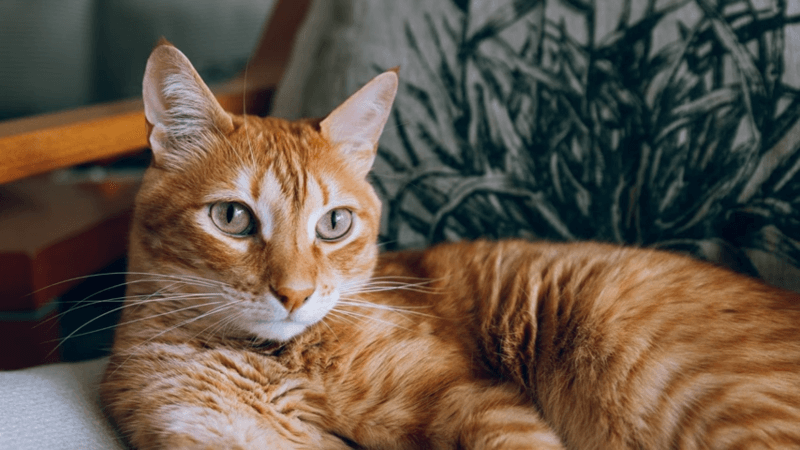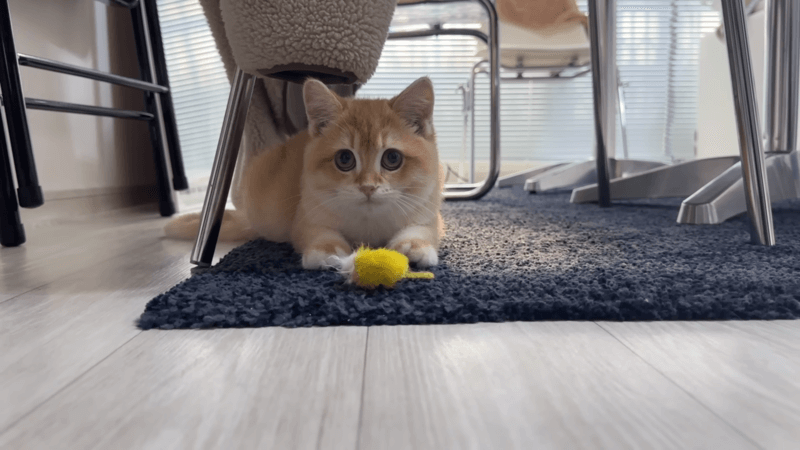No products in the cart.
For pet lovers, the question “Does cat CBD work for anxiety and marking?” often arises when faced with the mysterious world of feline behavior. Cats have a unique way of communicating and asserting their presence, and one such behavior that often baffles cat owners is urine marking. Cats indeed use urine to mark their territory, a behavior known as ‘urine marking.’
In this blog, we will delve into the world of cat territory marking, do cats pee to mark territory? how do cats mark their territory? exploring its reasons and identifying common signs.
Do Cats Pee to Mark Territory?
Yes, cats do use urine as a means to mark their territory. This behavior is called “urine marking” and is a common way for cats to establish their presence and claim a specific area as their own. Unlike regular urination, where a cat typically uses the litter box or goes outside to relieve itself, urine marking involves spraying small amounts of urine on vertical surfaces such as walls, furniture, or objects within their territory. It serves as a communication method to convey information to other cats about their presence, reproductive status, and territory boundaries.

What is Cat Territory Marking?
Cat territory marking refers to the various behaviors and techniques that cats employ to establish and maintain their territory. Cats are naturally territorial animals, and marking their territory is a way to communicate with other cats and protect their space. Common methods of territory marking include urine marking, scratching surfaces with their claws, leaving scent marks with facial glands, and vocalizing to assert their presence.
Why Do Cats Mark Their Territory?
Cats mark their territory for several reasons, including:
- Communication: Marking allows cats to communicate with other cats, conveying information about their presence, territorial boundaries, and reproductive status.
- Reproductive Signaling: Female cats may mark to attract potential mates, while male cats may mark to signal their availability to female cats.
- Security: Territory marking provides a sense of security, helping cats establish and defend their space against potential threats.
- Stress and Anxiety: Cats may also mark when they are stressed or anxious, as a way to create a familiar environment and cope with changes or threats.
Does Cat CBD Work for Anxiety and Marking?
CBD (cannabidiol) has shown potential benefits in addressing anxiety and some behavioral issues in cats, including marking. However, its effectiveness can vary from one cat to another, and more research is needed to understand its precise effects fully.
- CBD for Anxiety in Cats: Many cat owners have reported positive results when using CBD to help reduce anxiety-related behaviors in their cats. These behaviors may include excessive meowing, hiding, aggression, or litter box problems. CBD’s calming properties may help reduce anxiety and promote relaxation in some cats.
- CBD for Marking Behavior: While CBD may have a calming effect that could indirectly help reduce marking behavior, it is important to note that marking is a complex issue. Cats often mark due to stress, territorial conflicts, or anxiety. CBD could be part of a comprehensive plan to address marking behavior, but it may not be a standalone solution.

What is CBD Oil, and How Does It Work?
CBD (cannabidiol) oil is a natural compound derived from the hemp plant, a variety of cannabis with minimal or no THC (tetrahydrocannabinol). CBD interacts with the endocannabinoid system (ECS) present in the bodies of mammals, including cats. The ECS plays a role in regulating various physiological processes and maintaining balance within the body.
CBD works by interacting with ECS receptors, primarily CB1 and CB2 receptors, though it doesn’t bind directly to them. Instead, it modulates their activity, influencing various bodily functions. CBD is believed to enhance endocannabinoid signaling, reduce inflammation, and modulate neurotransmitter activity, potentially leading to various therapeutic effects in both humans and pets.
Potential Benefits of CBD Oil for Cats
While research on CBD’s effects in cats is still evolving, some potential benefits of CBD oil for cats include:
- Anxiety and Stress Reduction: CBD may help cats with anxiety, fear, or stress-related issues, such as separation anxiety or fear of loud noises.
- Pain Management: CBD’s anti-inflammatory and analgesic properties might provide relief for cats dealing with chronic pain, arthritis, or discomfort from other conditions.
- Anti-Inflammatory Effects: CBD may be useful for managing inflammatory conditions like inflammatory bowel disease.
- Seizure Management: Some cats with epilepsy experience a reduction in seizure frequency and severity with CBD oil.
- Appetite Stimulation: CBD might help stimulate appetite in cats with decreased appetite due to illness or treatment side effects.
- Cancer Symptom Management: While not a cure for cancer, CBD could help alleviate pain and nausea in cats with cancer.
Factors to Consider Before Using CBD Oil for Your Cat
Before administering CBD for cats, it’s essential to consider the following factors:
- Consult a Veterinarian: Always consult with a veterinarian before using CBD oil for your cat. They can provide guidance on dosage, potential interactions with other medications, and suitability based on your cat’s specific health condition.
- Quality and Source: Choose high-quality CBD oil specifically designed for pets. Look for products that are third-party tested to ensure purity and potency.
- Dosage: Determine the correct dosage for your cat based on their weight and the concentration of CBD in the product. Start with a low dose and gradually increase it while monitoring your cat’s response.
- Safety and Side Effects: Be aware of potential side effects, which can include drowsiness or gastrointestinal upset. Monitor your cat closely after administering CBD.
- Legal Considerations: Ensure that the use of CBD oil is legal in your region and that the product complies with local regulations.
- Consistency: Maintain a consistent dosing schedule and track your cat’s response to CBD over time.
- Other Treatments: CBD should be considered as a complementary treatment and not a replacement for conventional veterinary care.
How Do Cats Mark Their Territory?
Cats mark their territory in various ways to communicate with other cats and establish ownership. The primary methods include:
- Urine Marking: Cats spray or deposit small amounts of urine on vertical surfaces, such as walls or furniture, to leave scent markers.
- Scratching: Cats have scent glands on their paw pads, and when they scratch objects, they leave scent and visual marks. This behavior also helps maintain their claws.
- Facial Marking: Cats have scent glands on their cheeks and forehead. They mark objects, people, or other cats by rubbing their faces against them, conveying a friendly territorial message.
- Vocalizations: Some cats use vocalizations like yowling, meowing, or growling to assert their presence or communicate with other cats in the area.
- Territorial Aggression: When defending their territory, cats may engage in aggressive behaviors, such as fighting or hissing, to discourage intruders.

Differentiating Between Regular Urination and Urine Marking
Distinguishing between regular urination and urine marking is important for addressing behavioral issues. Here’s how to tell them apart:
- Location: Urine marking typically occurs on vertical surfaces (e.g., walls, doors), while regular urination happens in a litter box or a designated spot on a horizontal surface.
- Amount of Urine: Regular urination involves larger amounts of urine deposited in one location, whereas urine marking involves small amounts sprayed or dribbled over multiple spots.
- Position: Cats usually squat while urinating for elimination, but during urine marking, they stand upright with their tail quivering.
- Frequency: Regular urination follows a predictable schedule, while urine marking is often intermittent and triggered by specific stressors or territorial challenges.
- Context: If your cat is urine marking, there are usually other territorial or stress-related signs, such as aggressive behavior, anxious body language, or the presence of other cats. Regular urination tends to be a routine activity.
Identifying the Signs of Urine Marking in Cats
To identify urine marking behavior in cats:
- Smell: The distinct odor of cat urine in areas outside the litter box is a strong indicator of urine marking.
- Visual Evidence: Check for small, sprayed urine stains on vertical surfaces. These marks may be lower on the wall, and there may be multiple marks in different locations.
- Quivering Tail: Cats often raise their tail and quiver it while urine marking.
- Territorial or Stress-Related Behaviors: Watch for signs of territorial behavior, such as aggressive posturing or fighting with other cats. Stress-related behaviors, like excessive grooming or changes in eating habits, may also be present.
- Location Patterns: Note if the markings consistently occur in certain areas, near windows or doors, or in response to specific triggers (e.g., the presence of a new cat).
Conclusion
Cats use urine marking as a natural means to communicate, establish territory, and convey information to other felines. Recognizing the signs of urine marking and understanding the complex reasons behind this behavior is essential for cat owners to foster a harmonious living environment for their pets. Additionally, while CBD oil may offer potential benefits in managing anxiety and marking behavior in cats, its effectiveness varies, and professional guidance should be sought for its proper use as part of a holistic approach to feline well-being.
I am Nelson Cooper, I pursue my passion for writing and my belief is that cats love humans. I enjoy traveling and have a deep appreciation for the beauty of nature, as well as a soft spot for animals, particularly cats.



